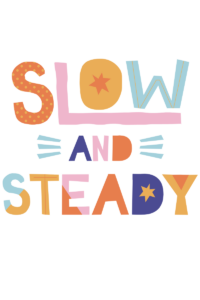Formative and summative assessments are usually poorly understood. They are very different and serve different purposes. The role of assessments is to help students succeed. Let’s dig into what they mean and what they do.
During my workshops, I like to present teachers with the following two analogies. The first one is from R. DuFour. He describes Formative Assessments as a “checkup with the doctor.” I would add that checkups help doctors prescribe the right medicine when it is needed.
R.DuFour describes Summative Assessments as “the autopsy.” There’s no medicine that we could prescribe at this point. We can analyze the cause of death. Call me morbid, but this is one of my favorite analogies. Do we want to give an educational checkup or autopsy?
Here’s a less gruesome comparison. Standards-Based and Responsive Evaluation, says, “When the cook tastes the soup, it’s formative. When the guest tastes the soup, it’s summative.”
Now in literal terms, formative means capable of alteration of growth and development and summative means cumulative. Did you know that the word assessment comes from a root word that means “to sit beside”? I came across that as I was doing research.
Summative Assessments
Summative Assessments or rather assessment OF learning focuses on a product or end result performance.
These are typically done in a whole group setting such as unit tests, quarterlies, finals, state tests, NWEA MAPS, etc.
Assessments fall into two categories.
1- questions that assess rote knowledge skills. These questions are usually close-ended with one answer (convergent thinking)
2- questions that assess higher-level executive functions

Summative Assessments Info…
- Information may be useful in looking at trends happening in your school(s)or district.
- Can’t uncover students’ conceptual misunderstandings.
- Abstract creative thinking is not usually assessed.
- Scores give information on student knowledge, not student understanding.
- If a student gets a correct answer, we assume that they understand the big idea behind the question.
- Does not inform teachers about what instructional decisions to take in their everyday lives.
- More of a snapshot that captures a single moment in time (Van de Walle).
- It is traditionally used to gather grades.
- Schools use this to determine student achievement levels at the end of units, quarters, or grade levels.
- High grades can lead students to overestimate themselves.
- Low grades can lead students to undervalue themselves.
- Grades and tests are perceived by students and their parents as a judgment of their intelligence.
- An 86, or a D on a student’s paper does little to help a student improve performance.
- “Students are under greater stress when taking summative assessments than when they take formative assessments” Sousa 2015 “Because of this stress students’ brain activity goes from concentrating on the emotional tasks of worrying instead of the cognitive tasks that the test requires”.
Formative Assessments
Formative Assessments or rather assessment FOR learning focuses on gathering the information that drives instruction. You learn about student understanding, not just student performance, which makes it different than summative.
Formative assessments are done in small group, whole group, or individually such as with exit tickets, student observations, interviews, and questioning. The Formative 5

Formative Assessments Info…
- Collecting information and responding to it by modifying instruction.
- Unpacks student thinking and provides feedback.
- Results are used to plan and implement activities that address student-specific needs.
- If the instruction is not adjusted the assessment cannot be considered formative since it did nothing to guide instruction.
- Should be used to differentiate instruction effectively.
- Used to check development, not a snapshot more like a streaming video that demonstrates active thinking and reasoning (Van de Walle)
- Emphasizes learning rather than grading.
- Opportunity for constant feedback.
- With these assessments, students are active in their learning.
- Students are not looking for the grade at the top of their paper and letting that number determine what they are like as a learner.
- Students are getting feedback from the teachers to show growth.
- Students should receive more ongoing assessments that use higher-level executive functions.
- Math Rubrics
What do you notice about your assessments? Are they mostly formative or mostly summative?
Hey Districts! Get It Together
Unfortunately, many districts concentrate primarily on summative assessments. Many districts require that report cards have percent grades. But that does not mean that everything used to assess students needs to be recorded as a grade. The purpose of assessments should not be to categorize, punish, or reward students but instead to push their learning forward (Earl 2012). There is a place for summative assessments. But there is a need for more formative ones. Rethinking Grading
Research states that when formative assessments are done well, there is a significant gain in student achievement. Consistent use of these assessments is parallel to effective instruction. Book- Math Formative Assessment
Some districts do promote more formative assessments, which is excellent. However, talking about it in a professional development setting is not enough. Teachers want to be shown what they look like and how to use them. Educators are often not trained in how to create or give assessments, so they resort to finding pre-made versions from the textbooks or websites. Book- Formative Assessments
It’s easy to understand why classroom teachers stay away from formative assessments. There is no time to generate them. I often hear, “Why should I reinvent the wheel? There are already assessments out there”. The image below is my response to that. Our current assessment wheel does not work if we only focus on summative assessments. Putting in the time to adjust our assessments makes it worth it in the long run for our students and for us.

Summative and Formative assessments each serve a specific purpose. Students should receive more ongoing assessments that use higher-level executive functions. So ask your district to provide you with training on how to create, modify, and balance these assessments.
Want to check out more?
MEMBERSHIP SITE:
https://zennedmath.com/online-courses/
FACEBOOK GROUP: Zenned Math Teachers
https://www.facebook.com/groups/zennedmathteachers/
YOUTUBE CHANNEL: Zenned Math
https://www.youtube.com/channel/UC5njH_5LoK6G67BvZecGfnw?
WANT ME IN YOUR INBOX? Sign up for my newsletter
https://view.flodesk.com/pages/5efc876dcaabca0028b95eb5
DISCLAIMER: Some links included in this blog might be affiliate links. If you purchase a product or service with the links that I provide, I may receive a small commission. There is no additional charge to you!

